American wildlife and wilderness, today, exists primarily because early conservationists fought to preserve them. As early as 1860, these visionaries, through sheer political willpower, convinced society of their inherent value beyond what could be pumped, mined and beaten out of them. They put forth laws to regulate their use and created a system to sustain their management financially. They catalyzed a collaborative system between the public user, the scientific community, and the political sphere that has become the most effective and egalitarian system in the world: The North American Model of Wildlife Conservation and Management.
This model and our system of public lands not only provides space for diverse ecosystems to flourish, but also give every single American citizen access to limitless adventure and recreational opportunities. As outdoorsmen, it's important to understand the foundation by which we operate, as well as our role in its endurance.
Here’s a recap of the seven sister principles that guide up the North American Model and support our unparalleled system.
Wildlife is a PUBLIC trust resource
In many ways, the North American Model started as a direct response to the European system of elite ownership. Unlike the feudal European model of landed gentry having exclusive ownership of wildlife, the American model establishes that wildlife is not ‘owned’ by anyone. Instead, the government manages wildlife in trust as a sustainable resource for all of its citizens, regardless of whether they are consumptive (ie. hunters, fishermen, etc.) or non-consumptive users. For the consumptive users, an extensive system regulates the controlled harvest of game, fish, and foraged plants as renewable resources, while also promoting the wellbeing of the larger ecosystem. Those who draw from the land must also give back to it. Hunters and anglers provide direct funding to wildlife and habitat related conservation efforts through the purchase of sporting licenses and Federal Duck Stamps, through an excise tax on sporting items associated with the Federal Aid in Wildlife Restoration Act, as well as through various state conservation funds. Not to mention the work of countless volunteer organizations that give back through direct funding, advocacy, and sweat equity.
Elimination of commercial markets for wild game
The market for fur and meat and the larger forces of western expansion drove many game and non-game species to the verge of extinction. American conservationists came to the conclusion that the commercialisation of wildlife had to be stopped. While the highly regulated sale of some wild products such as fur is still permitted, the sale of harvested meat (other than some wild fish) is highly illegal. Some argue that the sale of game meat is common in many countries and could be an incentive for better management. Others point out the difficulty in regulating a wild game market that would lead to severe abuse and many food safety concerns were it to become legal.
At its core, this principle is about promoting the inherent value of wildlife, rather than only making it valuable as a commodity.
Use and harvest of wild game is dictated by law
American hunting, fishing, and conservation is informed by science and enforced by law. Wildlife biologists work with sportsmen to set the rules, seasons, bag limits, etc., for specific species in specific areas, and to develop guidelines for sustainable and ethical use. Contrary to the popular mainstream narrative, hunting and fishing is HIGHLY regulated. Conservation law is enforced to ensure legal and ethical standards are maintained, and that crimes against wildlife and the environment are punished.
Wildlife can only be taken for “legitimate” purposes.
Above all, hunters must utilize the meat they harvest. The ethical reasoning speaks for itself, and most states have wanton waste laws on the books. We have an obligation to do everything in our power to waste as little of that animal as possible. Respect the resource, respect the land, and respect the life that was taken.
Wildlife is an international resource
In America, our national public lands and endangered wildlife are managed at the Federal level, where most other wildlife and state managed land falls within the jurisdiction of the state government. But because of the international nature of wildlife migrations and movement, conservation is often approached at the global level. This is particularly relevant to bird and fish species that move between multiple countries and continents, and for herds and individual creatures that cross international borders. This often means collaborating with other countries for research, direct conservation work, and governance. International collaboration will be even more critical as the realities of a changing climate continue to affect the planet.
Wildlife resources must be managed on scientific, not emotional basis
Perhaps the most important tenet, this stipulates that wildlife management and policy must be based on sound scientific evidence. Special interests and emotional/sentimental arguments are not grounds for consideration. Policy and practices must serve the best interests of the ecosystem, while taking into account the needs of the various stakeholders. A scientific basis also ensures that the management plan is adaptable as conditions change and as new data and research emerges. This directly influences hunting and fishing seasons, bag limits, manner of taking, and other regulations.
Unfortunately, though it is the most important, this is perhaps the least respected tennet. Whether through the naivete of the misinformed, or the greed of industry, conservation’s pure roots are corrupted. We see this all the time in legislation that driven by public outcry instead of hard science and balanced management.
Democracy of use/Opportunity for all
As American citizens, we are the beneficiaries of the entire system. We are all partial owners of our public lands, and are afforded endless recreational opportunities through the wise use of our natural resources. The ability to hunt, fish, and explore the outdoors is open to every single citizen who is willing to follow the rules. Pick a spot on the map and go.
Is the system perfect? No system ever is. Politics and bias will find its way into everything. But by and large, the North American Model continues to be a stunning success story due to its scientific foundation and user-funded model. The next time you hit the river or the woods, think about these principles and the infrastructure they support, and perhaps ponder what you can do to ensure the continuity of the North American Model for generations to come.





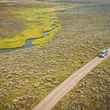

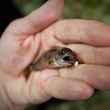




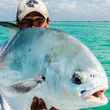



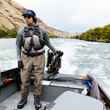
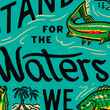



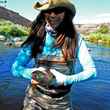





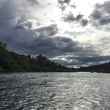

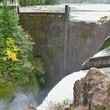
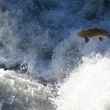
Comments